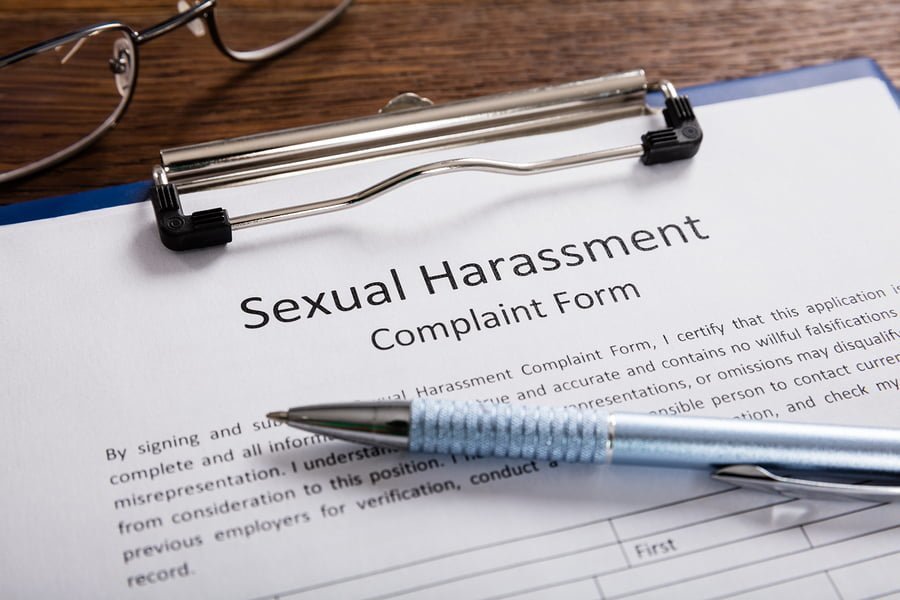Harassment is an all-too-common problem in Australia, with one in three workers experiencing some form of workplace sexual harassment in the last five years. Strengthened legislation has brought the issues of sexual harassment, bullying and discrimination to the fore, but cultural change can be slow and problems may persist in many workplaces. So, what can you do if you’re being harassed?

Sexual harassment in the workplace has been illegal in Australia for more than 30 years but remains a persistent problem for women (often young women) and an increasing number of men.
Many people have a story to tell about unwelcome sexual attention at work, but only a small proportion actually make a complaint. This may be because they fear being labelled a troublemaker. They may worry that colleagues will view them as austere and humourless, that they ‘can’t take a joke’. They may be concerned that an official complaint will negatively impact on their career, or that they’ll even lose their job. It may simply be that they don’t recognise that unpleasant physical contact or uncomfortable encounter or suggestive text as sexual harassment.
Recognising unwanted sexual advances and behaviour from colleagues as harassment can be the first step to ending the immediate problem – and potentially nipping in the bud an ongoing pattern of inappropriate workplace behaviour.
So, what is sexual harassment?
The Fair Work Ombudsman defines sexual harassment as any unwanted or unwelcome sexual behaviour. It‘s important to note that it has nothing to do with mutual attraction or friendship.
The Commission offers the following examples of inappropriate behaviour:
- inappropriate physical contact, such as unwelcome touching
- staring or leering
- a suggestive comment or joke
- a sexually explicit picture or poster
- an unwanted invitation to go out on dates
- a request for sex
- intrusive questioning about a person’s private life or body
- unnecessary familiarity, such as deliberately brushing up against a person
- an insult or a taunt of a sexual nature
- a sexually explicit email or text message.
Talk about it
If you experience harassment in the workplace, it’s important not to ignore it. The behaviour may persist, or indeed get worse, unless it is addressed clearly from the outset. Ignoring the behaviour, or the harasser themselves, may seem the simplest and easiest strategy, but it rarely works.
If you feel you are able, raise the issue directly with the harasser and make it clear that their behaviour is unwelcome and offensive. They may be oblivious to the fact that they have crossed the line. It’s important for them to understand where that line is.
If talking directly to the harasser is too intimidating, share your story with a colleague or your supervisor or manager. Confide in your friends and family about your experiences. Use your social networks to embolden you, validate your feelings and give you support at a difficult time. It’s important not to feel alone.
The power of the bystander
The supportive bystander can be very powerful in a situation like this. If you see a colleague being harassed or showing signs of stress because of unwelcome attention from another work colleague, don’t be shy in stepping in. Ask your colleague to share their experience with you. Express your support. Be a sympathetic ear or sounding board. Call the harasser out directly and point out that the behaviour is unacceptable. Report the behaviour to your manager or the human resources department or give advice on how to make a complaint. As an impartial observer, your voice can be very persuasive.
The Human Rights Commission offers useful guidance on Bystander Approaches to Sexual Harassment in the Workplace, including a number of other actions for bystanders:
- Focus on prevention in the workplace.
- Talk to your manager or supervisor about displaying the workplace sexual harassment policy prominently in your workplace.
- Organise sexual harassment training for your workplace.
- Talk to the human resources department about implementing any sexual harassment policies.
- Talk to a union delegate or union about raising awareness of sexual harassment in the workplace.
Seek advice
If you feel that you have been sexually harassed, there are several places outside your immediate workplace you can go for advice. You can seek assistance from a union delegate or contact a union office for advice. The union for architects is Professionals Australia. Another option might be to contact a community legal centre or working women’s centre for legal advice. For assistance over the phone, contact 1800 RESPECT for counselling, information and referral. Mates in Construction also offers a support line and case management to workers (including architects) who need help and support.
State and Territory-based based Equal Opportunity Commissions also offer services such as online enquiry lines with free advice and information, and dispute resolution services for people who may have experienced discrimination or sexual harassment in the workplace. See below for the full list with links under Resources.
Take notes
If a pattern of harassment starts to emerge, it’s a good idea to keep a record of any incidents that occur. Jot down the particulars – dates, times, people involved, what was said and done. Have the facts at your fingertips in case you choose to go ahead with a formal complaint.
Report it
Only one in five of those who experience sexual harassment make a formal complaint, but it can be very effective. Almost half of workplace sexual harassment stops after a report is made.
If you’re concerned about the repercussions of reporting, remember that under federal legislation it’s unlawful to disadvantage an employee because they have made a complaint.
There are several options for making a complaint about sexual harassment:
At work
Many practices have a sexual harassment policy as part of a Code of Conduct for all employees within the company, with detailed procedures outlined on how to handle complaints. The first step is likely to be to make a formal complaint to the human resources department or the staff member responsible for workplace allegations/investigations.
If your company doesn’t have an official procedure for making complaints, you should report the problem to your supervisor or manager. If your supervisor or manager is actually the person who is harassing you, the complaint will need to be made to their immediate supervisor. It’s crucial that your company’s management is aware of the harassment.
The Fair Work Commission offers guidance for employees on how to have difficult conversations in the workplace.
Fair Work Commission
If you don’t feel confident making a direct report to your employer, the Fair Work Commission can handle disputes about sexual harassment under the Fair Work Act. Steps the Commission might take include:
- make a stop sexual harassment order to prevent future sexual harassment
- conciliation
- mediation
- make a recommendation or express an opinion.
The Commission has guidance about making applications to stop sexual harassment at work. Some employees may be eligible for free legal advice through the Commission’s Workplace Advice Service.
The Fair Work Commission also has the power to start court proceedings for alleged breaches of laws prohibiting sexual harassment.
Human Rights Commission
Another option is to report to the Australian Human Rights Commission. Complaints must be made in writing or by email. This can be done by downloading a complaints form or completing the online complaint form. If you need help with the wording of your complaint, the Commission can also provide assistance.
The Complaints section of the Commission’s website has more information about the complaints process. Alternatively, for further information, or to discuss a complaint with a Complaints Information Officer, call 1300 656 419.
Resources
For more information or to make a complaint about sexual harassment, you can also contact the following state and territory anti-discrimination and equal opportunity agencies.
Anti-Discrimination Board of New South Wales
Anti-Discrimination Commission of Queensland
Equal Opportunity Commission Western Australia
Northern Territory Anti-Discrimination Commission
Office of the Anti-Discrimination Commission (Tasmania)
South Australia Equal Opportunity Commission
Victorian Equal Opportunity and Human Rights Commission
This article was originally published in March 2018. It was updated in September 2024.
Also see Sexual Harassment & Bullying Resources for services, such as legal advice, mental health services and educational tools for preventing harassment and bullying in the workplace, and Reporting sexual harassment & bullying for an outline of options and first steps.




















